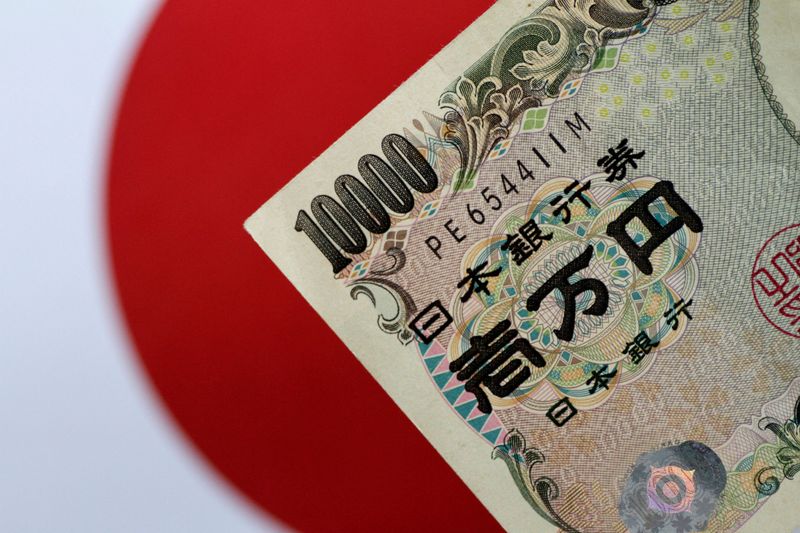By Kevin Buckland and Alun John
TOKYO – A jump in the price of oil and a yawning gap between yields at home and those of U.S. bonds have left Japan’s yen with next to no chance of a quick recovery from the symbolic 120 level it fell to Tuesday, analysts say.
The yen breached 120 per dollar for the first time in six years, extending its swift 4.5% fall in less than three weeks.
Analysts at BofA said the yen could reach 123 per dollar by September. In the past, Japan would have welcomed a weaker yen, which would have boosted profits from exports. But with exports slowed by the pandemic and foreign manufacturing, those days are gone, analysts say.
“You have a higher oil price, and you have the widening interest rate gap, and the university fund is supposed to start investing by the end of this fiscal year, so I think overall there’s going to be more yen supply than demand in the coming months,” said Shusuke Yamada, chief Japan FX strategist at BofA in Tokyo.
The 10 trillion yen ($83 billion) university fund, which will begin investing by this month, is part of Prime Minister Fumio Kishida’s stimulus package and a chunk is meant to be parked in foreign assets.
Meanwhile, high energy prices caused in part by the war in Ukraine have caused Japan’s trade deficit to soar.
The world’s third-largest economy reported a wider-than-expected 668.3 billion yen trade deficit for February, smaller than January’s 2.19 trillion yen gap, which was the biggest in a single month in eight years.
Brent crude has been above $100 per barrel for almost all of March, and rose as high as $139 early in the month. [O/R]
“The vicious cycle between a deteriorating trade balance and falling yen may have started already,” JPMorgan’s Tohru Sasaki said in a note.
“Higher commodity prices will result in a larger trade deficit, which should result in a weaker yen,” he wrote, adding that because a lot of Japanese manufacturing was no longer based in the country, there would be no concurrent jump in exports.
JPMorgan recently raised its target for yen to 121 per dollar by the first quarter of 2023.
INTEREST RATE DIVERGENCE
Also weighing on the yen is the growing gap between Japanese and U.S. interest rates. Yields on 10-year Japanese government bonds are around 0.21%, and a sharp rise in U.S. yields – U.S. 10 year bond yields reached 2.35% on Tuesday – has taken the spread between the two markets to its widest since August 2019.
In theory, those low yields and expectations for yen weakness could spur more Japanese investors to sell their currency and turn their attention abroad, although in practice much of such flows are hedged and have only marginal impact.
GRAPHIC: Japan’s yen under pressure: https://fingfx.thomsonreuters.com/gfx/mkt/zgpomymmxpd/Pasted%20image%201647925341006.png
Japan’s yields are set to stay low. Bank of Japan Governor Haruhiko Kuroda said on Tuesday that ultra-loose monetary policy must be maintained, lest higher food and energy costs hurt the economy. With even the European Central Bank looking to tighten monetary policy, the BOJ is the last dove among major central banks.
Japanese inflation is low by global standards. In the United States, markets are pricing in an increasingly aggressive cycle of rate increases.
Fed Chair Jerome Powell said on Monday that the U.S. central bank must move “expeditiously” to raise rates and possibly “more aggressively” to keep an upward price spiral from getting entrenched.
Powell’s comments were the catalyst in sending the yen past 120, said Yujiro Goto, head of FX strategy at Nomura Securities, though he reckoned the yen would not weaken much further.
“I expect dollar-yen will move to a new range centred around 120. A lot of U.S. rate hikes are already priced into the market, so while the dollar could rise to 122 or 123 yen, it looks hard for it to break above 125,” he said.
Japan is watching recent falls in the yen carefully as sharp moves are “undesirable,” the government’s top spokesman said on Friday.
However, there may not be much they can do.
“Policymakers care about volatility, and the speed of the yen’s decline has been significant, so I do think there’s going to be more comments trying to check the market,” said BofA’s Yamada. “But a good part of this has been led by a shift in fundamentals – for example the trade balance – so I’m not sure if verbal intervention can really turn the market.”
(Reporting by Kevin Buckland and Hiroko Hamada in Tokyo Writing by Alun John; Editing by Vidya Ranganathan and Gerry Doyle)
